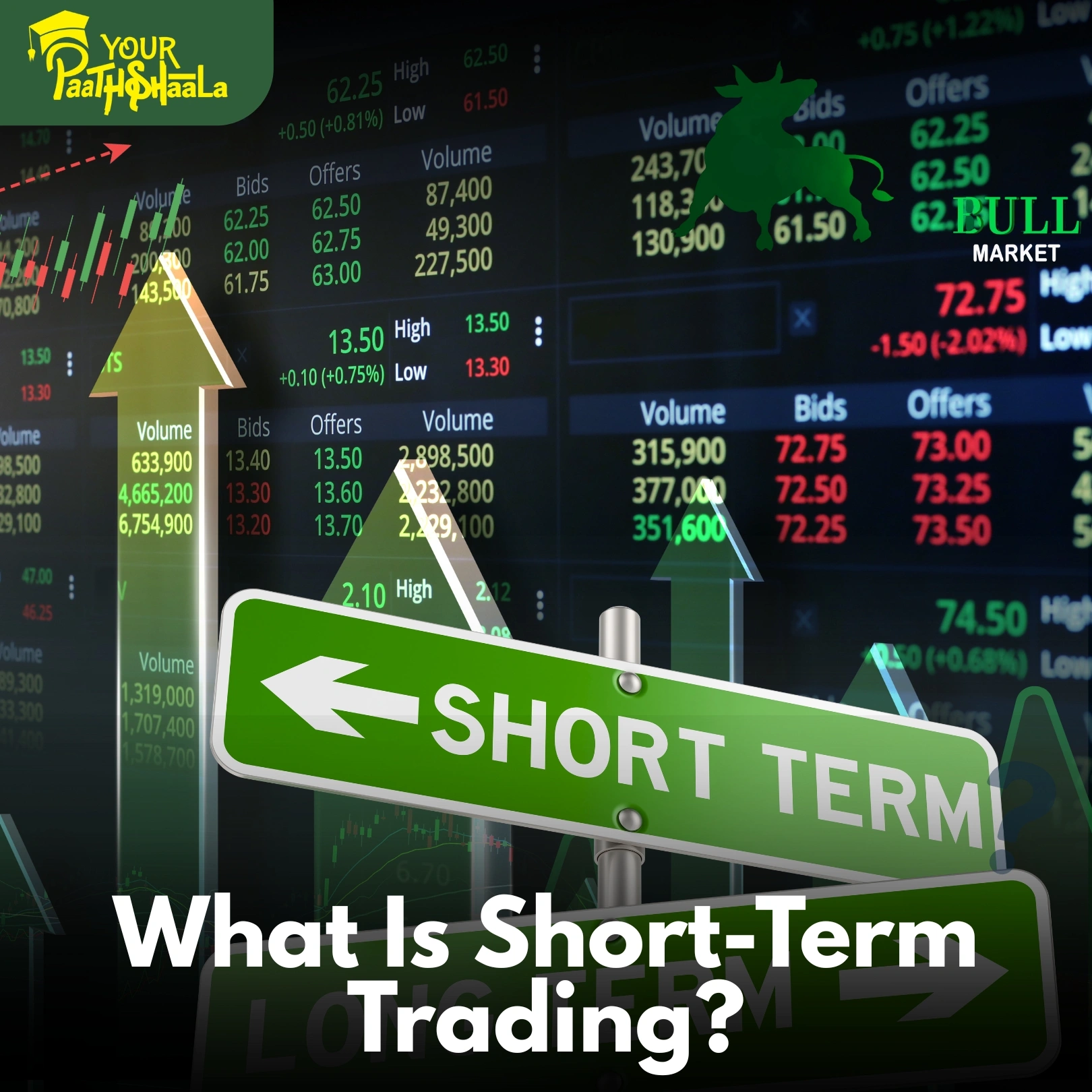What is Short-Term Trading? The Ultimate Beginner’s Guide to Quick Profits in the Stock Market
Are you intrigued by the idea of making quick profits in the stock market? Do you want to learn how to capitalize on small price movements using proven techniques like swing trading and day trading? If so, you’re not alone. Short-term trading is one of the most exciting and dynamic ways to participate in the financial markets, offering the potential for fast returns—if you know what you’re doing.
In this comprehensive guide, we’ll break down everything you need to know about short-term trading, including essential strategies, risk management tips, and the mindset required for success. Whether you’re a complete beginner or looking to sharpen your trading skills, this article will provide you with clear, actionable advice to help you get started on your journey.
What Is Short-Term Trading?
Short-term trading is a style of trading where positions are held for a short period, ranging from a few minutes to several days. The main goal is to profit from small price fluctuations in stocks, currencies, or other financial instruments.
Key features of short-term trading:
Quick trades: Positions are opened and closed within a short timeframe.
Focus on price movements: Traders look for small but frequent opportunities.
Active management: Requires constant monitoring and fast decision-making.
Common Short-Term Trading Techniques
1. Day Trading
Definition: Buying and selling financial instruments within the same trading day.
Objective: Capture intraday price movements and avoid overnight risks.
Tools: Technical analysis, real-time charts, and fast execution platforms.
Who is it for? Traders who can dedicate several hours a day to the markets and thrive in a fast-paced environment.
2. Swing Trading
Definition: Holding positions for a few days to a couple of weeks.
Objective: Profit from short- to medium-term price swings.
Tools: Chart patterns, momentum indicators, and trend analysis.
Who is it for? Those who want to trade actively but can’t monitor the markets all day.
3. Scalping
Definition: Making dozens or even hundreds of trades per day to capture tiny price changes.
Objective: Accumulate small profits that add up over time.
Tools: High-speed trading platforms and strict discipline.
Who is it for? Highly experienced traders who can make rapid decisions.
Why Choose Short-Term Trading?
Advantages
Potential for quick profits: You don’t have to wait months or years to see returns.
Opportunities in any market: Short-term traders can profit in both rising and falling markets.
No overnight risk: Especially with day trading, you avoid the uncertainty of holding positions when markets are closed.
Challenges
Requires discipline and focus: Emotional control and quick thinking are essential.
Higher transaction costs: Frequent trading can lead to more commissions and fees.
Risk of losses: Fast-moving markets can result in quick losses if you’re not careful.
Essential Skills for Short-Term Traders
1. Technical Analysis
Short-term traders rely heavily on technical analysis, which involves studying price charts, patterns, and indicators to predict future movements. Common tools include:
Moving averages
Relative Strength Index (RSI)
MACD (Moving Average Convergence Divergence)
Support and resistance levels
Candlestick patterns
2. Risk Management
Protecting your capital is crucial. Effective risk management strategies include:
Setting stop-loss orders to limit potential losses
Using position sizing to avoid overexposure
Never risking more than a small percentage of your trading capital on a single trade
3. Emotional Discipline
Short-term trading can be stressful. Successful traders develop the ability to:
Stick to their trading plan
Avoid emotional decisions
Accept losses as part of the process
4. Fast Decision-Making
Markets can move quickly. The ability to analyze information and execute trades rapidly is a key advantage.
Step-by-Step Guide to Getting Started with Short-Term Trading
Step 1: Learn the Basics
Before risking real money, it’s essential to understand how the markets work, the different types of orders, and basic trading terminology.
Step 2: Choose Your Trading Style
Decide whether you want to focus on day trading, swing trading, or scalping based on your personality, schedule, and risk tolerance.
Step 3: Develop a Trading Plan
A solid trading plan should include:
Entry and exit criteria
Risk management rules
Daily or weekly trading goals
A routine for reviewing and improving your performance
Step 4: Practice with a Demo Account
Most brokers offer demo accounts where you can practice trading with virtual money. This is a great way to build confidence and test your strategies.
Step 5: Start Small
When you’re ready to trade with real money, start with small positions. Gradually increase your trade size as you gain experience and confidence.
Step 6: Keep Learning and Adapting
The markets are always changing. Stay updated with news, refine your strategies, and never stop learning.
Common Mistakes to Avoid in Short-Term Trading
Overtrading: Making too many trades can lead to high costs and emotional burnout.
Ignoring risk management: Failing to set stop-losses can result in large losses.
Chasing losses: Trying to recover losses by making impulsive trades usually leads to bigger problems.
Lack of preparation: Trading without a plan is a recipe for disaster.
Letting emotions drive decisions: Fear and greed are the enemies of successful trading.
Tools and Resources for Short-Term Traders
Trading platforms: Choose a reliable platform with fast execution and advanced charting tools.
Market news sources: Stay informed about economic events and news that can impact prices.
Trading journals: Keep a record of your trades to analyze what works and what doesn’t.
Educational resources: Books, online courses, webinars, and mentorship can accelerate your learning curve.
The Mindset of a Successful Short-Term Trader
Short-term trading is not just about strategies and tools—it’s also about mindset. The most successful traders:
Remain patient and disciplined
Focus on process over profits
Learn from mistakes
Continuously adapt to changing market conditions
Frequently Asked Questions About Short-Term Trading
Q: Is short-term trading suitable for beginners?
Yes, but only if you are willing to invest time in learning, practicing, and developing discipline.
Q: How much capital do I need to start?
You can start with a modest amount, but it’s important to only use money you can afford to lose.
Q: Can I trade part-time?
Swing trading is ideal for part-time traders, while day trading typically requires full-time attention.
Q: What markets can I trade short-term?
Stocks, forex, commodities, and cryptocurrencies are all popular choices for short-term trading.
How to Learn Short-Term Trading the Right Way
While there is plenty of information available online, nothing beats the value of a structured course led by experienced traders. A professional course will teach you:
The fundamentals of short-term trading
How to use technical analysis effectively
Risk management techniques to protect your capital
How to develop and test your own trading strategies
The psychological aspects of trading
Take the Next Step: Join a Professional Stock Market Course in Raipur
If you’re serious about mastering short-term trading and want expert guidance, consider enrolling in a comprehensive stock market course. At YourPaathshaala, located near Anjali Children Hospital, Tagore Nagar, Mathpurena, Raipur (PIN code: 492001, Chhattisgarh), you’ll receive:
Step-by-step training on short-term trading techniques like day trading and swing trading
Hands-on practice with real market data
Ongoing mentorship and support
Access to a community of like-minded traders
📞 Call Now to contact us and start your journey to becoming a confident and successful short-term trader!
Unlock the secrets of short-term trading, learn proven strategies, and achieve your financial goals with expert training at YourPaathshaala.







